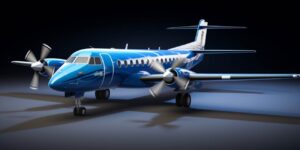Firstly, knowledge is your greatest asset. Familiarize yourself with different aircraft models, their components, and the regulations governing their sale. Being well-versed in the intricacies of the aviation industry will set you apart as a trusted source for aircraft parts.
Research is paramount. Identify the most sought-after parts, their market demand, and potential competitors. Utilize online platforms and forums to understand the needs of buyers and trends within the industry. This insight will guide your inventory selection and pricing strategies.
Establishing credibility is crucial. Create a professional online presence with a user-friendly website. Highlight your expertise, certifications, and any partnerships with reputable suppliers. Building trust is the foundation for success in the business of selling aircraft parts.
Utilize the power of digital marketing to reach a global audience. Leverage social media platforms, search engine optimization (SEO), and targeted advertising to promote your inventory. Creating engaging content related to aviation and aircraft maintenance will not only attract potential buyers but also position you as an authority in the field.
When it comes to inventory management, precision is key. Keep detailed records of your stock, ensuring accuracy in part numbers, specifications, and conditions. This meticulous approach will not only streamline transactions but also enhance customer satisfaction, leading to repeat business.
Consider collaborating with manufacturers and established suppliers. Securing partnerships can grant you access to exclusive deals, bulk discounts, and a reliable supply chain. This can significantly impact your profit margins and competitive edge in the aircraft parts market.
Customer service is a differentiator in any industry, and this holds true for selling aircraft parts online. Provide prompt and accurate responses to inquiries, offer comprehensive product information, and ensure efficient shipping and delivery. Satisfied customers are more likely to become repeat buyers and recommend your services to others.
Pricing strategy is a delicate balance. Factor in the rarity, condition, and demand for each part when determining prices. Regularly assess market trends and adjust your pricing accordingly. Offering competitive prices while maintaining quality will attract discerning buyers.
As you navigate the online marketplace, keep in mind the importance of networking. Attend aviation events, join forums, and engage with industry professionals. Building a network can open doors to new opportunities, partnerships, and valuable insights that can propel your business forward.
Lastly, stay informed about regulatory changes. The aviation industry is subject to strict regulations, and compliance is non-negotiable. Stay updated on any alterations to laws governing the sale and transportation of aircraft parts, ensuring that your business remains in full compliance.
Effective methods of aircraft parts trading
When engaging in the dynamic world of aircraft parts trading, it’s essential to employ effective methods that ensure success and reliability. This sector demands precision, reliability, and a keen understanding of market trends. Here, we delve into key strategies that can elevate your aircraft parts trading game.
First and foremost, establishing a robust network is paramount. Connect with reputable suppliers, manufacturers, and other players in the aviation industry. Utilize online platforms, industry events, and forums to build relationships. This network will serve as the backbone of your operations, providing access to a diverse range of quality aircraft parts.
Embrace technology to streamline your processes. Implementing a sophisticated inventory management system ensures accurate tracking of parts, reducing the risk of errors and enhancing overall efficiency. Additionally, leverage online marketplaces and platforms dedicated to aviation trading for increased visibility and accessibility.
Market research is a cornerstone of successful aircraft parts trading. Stay abreast of industry trends, demand fluctuations, and regulatory changes. This knowledge empowers you to make informed decisions, anticipate market needs, and position your inventory strategically. Conduct SWOT analyses regularly to identify strengths, weaknesses, opportunities, and threats in the market.
Invest in certifications and compliance. The aviation industry is highly regulated, and adherence to quality standards is non-negotiable. Ensure that your aircraft parts meet or exceed industry standards and certifications. This not only enhances your credibility but also opens doors to partnerships with major players in the industry.
Effective marketing is crucial for attracting potential buyers. Utilize digital platforms, create engaging content, and showcase your inventory through visually appealing presentations. Highlight unique selling points, such as quick delivery times, competitive pricing, or specialized expertise in certain aircraft models.
Transparency is key in aircraft parts trading. Clearly communicate the condition, origin, and any relevant details about the parts you’re offering. This fosters trust with buyers and reduces the likelihood of disputes. Providing detailed documentation and history of each part adds an extra layer of credibility to your business.
Consider implementing a tiered pricing structure based on the condition and availability of aircraft parts. This allows you to cater to a wider range of customers with varying budgets. Additionally, offering bulk discounts or package deals can incentivize larger purchases and build long-term relationships with clients.
Emphasize customer service excellence. Timely responses, accurate information, and reliable support contribute to customer satisfaction. Positive experiences lead to repeat business and referrals, fostering a positive reputation in the aircraft parts trading community.
Finding the best aircraft parts suppliers
When it comes to the aviation industry, finding the best aircraft parts suppliers is paramount for ensuring the safety and efficiency of flights. The process of sourcing these crucial components involves meticulous research and a keen eye for quality. To source the best aircraft parts, one must delve into a network of reliable providers who not only deliver excellence but also maintain a commitment to industry standards.
Identifying the right supply chain for aircraft parts requires a comprehensive approach. A key aspect is to establish partnerships with providers who have a proven track record in delivering top-notch components. This involves scrutinizing their manufacturing processes, quality control measures, and adherence to aviation regulations. The aviation landscape demands precision, and the selected supply chain should echo this commitment.
The importance of providers in the aviation industry cannot be overstated. They serve as the backbone of the supply chain, ensuring that each component meets rigorous standards. A diverse network of providers allows for flexibility in sourcing, minimizing the risk of disruptions due to unforeseen circumstances. This diversity also enables suppliers to stay ahead of market trends, ensuring that they can cater to the evolving needs of the aviation sector.
One effective strategy in finding the best aircraft parts suppliers is to leverage technological advancements. Online platforms and digital marketplaces provide a streamlined approach to source components. These platforms often vet providers and suppliers, making it easier for aviation professionals to choose partners based on their specific requirements.
Collaboration and communication are crucial in the quest to find the optimal supply chain. Establishing clear channels of communication with providers ensures that any potential issues can be addressed promptly, preventing disruptions to the overall aviation process. Transparency between suppliers and aviation professionals is key to building a robust and reliable supply network.
The aviation industry’s stringent regulations necessitate a thorough vetting process for providers. Certifications and compliance with aviation authorities are non-negotiable. Choosing suppliers with the necessary certifications guarantees that the sourced components meet the industry’s safety and performance standards.
In the dynamic world of aviation, staying informed about the latest advancements in technology and materials is essential. Providers who embrace innovation and stay at the forefront of industry trends are more likely to deliver cutting-edge components that enhance the overall performance of aircraft. Establishing partnerships with such forward-thinking suppliers ensures that your supply chain remains competitive and resilient.
Ultimately, finding the best aircraft parts suppliers is an ongoing process that requires a combination of diligence, technological integration, and collaboration. The aviation industry’s reliance on precision and safety demands nothing less than excellence from its providers. By carefully navigating the complex landscape of supply chain management, aviation professionals can ensure that their aircraft are equipped with components that meet the highest standards of quality and reliability.
Tips for profitable aircraft parts business
Welcome to the lucrative world of aircraft parts business, where the skies aren’t the only limit. For entrepreneurs seeking soaring profits and a steady stream of income, navigating the commercial landscape of aircraft parts can be both challenging and rewarding.
In this dynamic industry, success hinges on strategic decision-making and a keen understanding of market trends. One crucial tip for a profitable venture is to establish strong partnerships with reputable suppliers. By securing reliable sources for high-demand parts, your business can ensure a steady influx of inventory, ultimately boosting profit margins.
When it comes to pricing strategies, adopting a competitive yet reasonable approach is key. Setting commercial prices that attract customers while still ensuring healthy profits requires a delicate balance. Consider market research to gauge the pricing landscape and adjust your strategy accordingly.
Diversification is another cornerstone for sustained income in the aircraft parts business. Instead of relying solely on one segment, explore various niches within the market. This not only safeguards your business against fluctuations but also opens up new avenues for profitable growth.
Profitability is often linked to efficiency, and in the world of aircraft parts, timely delivery is paramount. Implementing streamlined logistics and supply chain processes can significantly enhance your operational profitability. Utilize advanced tracking systems to monitor shipments, minimizing delays and maximizing customer satisfaction.
Building a reputation for quality and reliability can propel your business to new heights. Invest in rigorous quality control measures to ensure that the parts you offer meet or exceed industry standards. This commitment to excellence not only attracts more customers but also fosters repeat business, creating a stable source of income.
Consider leveraging digital platforms for commercial success. Establishing an online presence allows you to reach a broader audience and facilitates smoother transactions. An e-commerce platform can be a game-changer, providing a user-friendly interface for customers to browse and purchase aircraft parts effortlessly.
Effective communication is the backbone of any prosperous enterprise. Maintain open and transparent communication channels with both suppliers and customers. This not only enhances trust but also establishes your business as a reliable player in the commercial aircraft parts market.
Lastly, staying informed about industry trends and regulatory changes is non-negotiable. A proactive approach to adapting to market shifts ensures that your business remains not only profitable but also compliant with evolving standards. This foresight positions your venture as a forward-thinking player in the aircraft parts industry.






